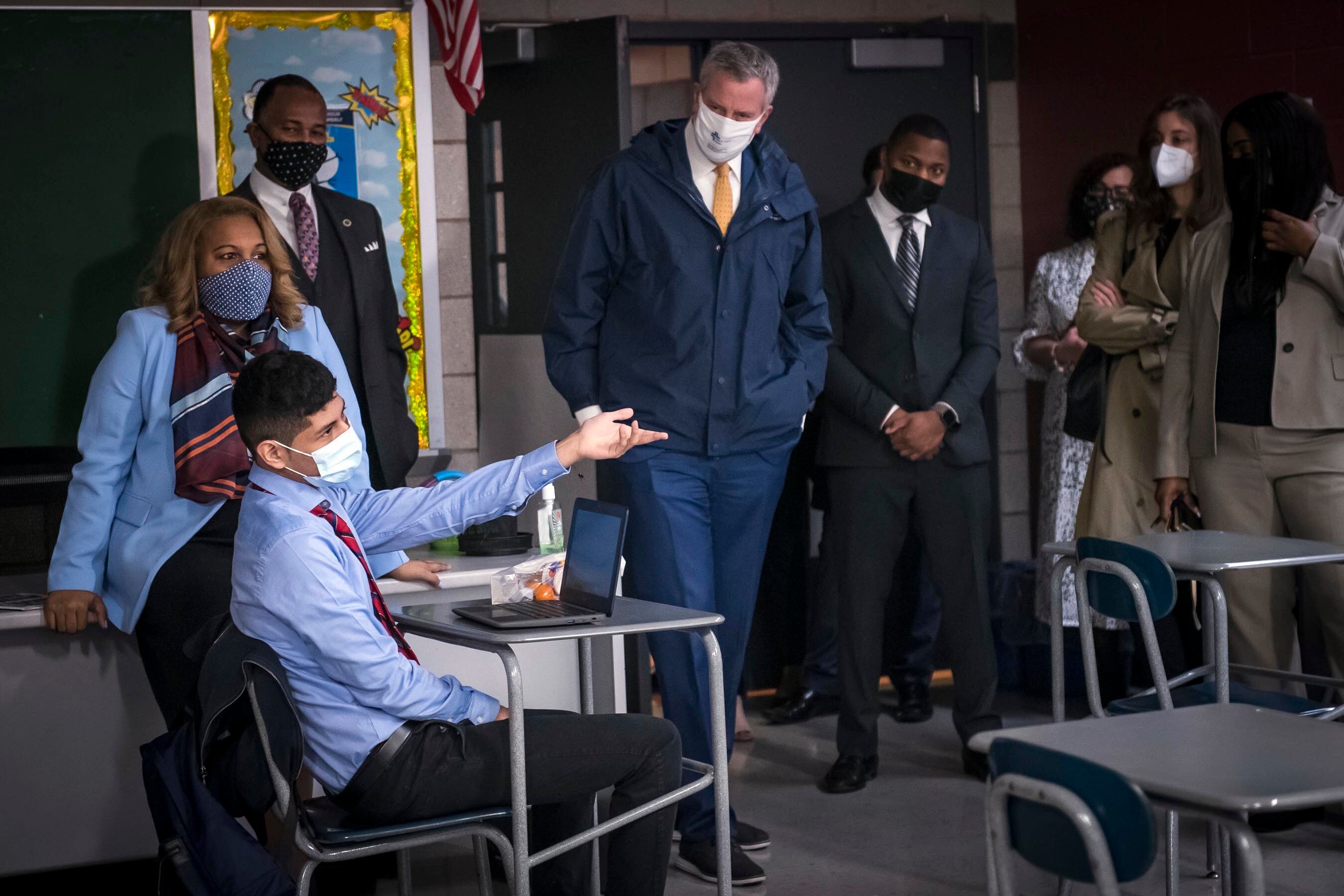With Mayor Bill de Blasio promising a “full” reopening of the city’s schools this fall, some parents have been asking a basic question: Will there be a fully virtual option for families who want it?
A clear answer is hard to come by.
De Blasio said in March that “my expectation is we’ll have to have a remote option,” with students either attending school five days a week in person or fully remotely.
On Thursday, schools Chancellor Meisha Porter offered a less definitive response.
“As far as a potential option to not be in person, again, that will be dependent on where we are. The city is making a lot of progress,” Porter said at a meeting of her parent advisory council.
For weeks, the mayor and chancellor have sidestepped questions about what a remote option would look like, instead emphasizing that they hope all students will return to school in person.
“It is too early to be able to tell you everything about September, but I can tell you this much: We want every child back in the classroom, and we’re planning on every child being back in the classroom,” de Blasio said late last month.
Whether the mayor’s hopes for a full return line up with family preferences remains to be seen. More than 60% of students remain fully remote this school year, despite the city’s efforts to reopen school buildings.
The question of whether to make it easy for families to select remote learning next fall is fraught. Despite wider vaccine availability and falling infection rates, some families are concerned about vulnerable relatives, don’t trust the education department to implement safety measures, or may be reluctant to send their children back to buildings until they can be vaccinated. Children under 16 are not yet eligible to be vaccinated, but that may change soon, as children as young as 12 may be eligible as early as next week, and children as young as 2 might be eligible by this fall.
The available evidence suggests the city’s schools have not driven major coronavirus outbreaks, and new coronavirus cases have been falling precipitously, making the risks of in-person learning even lower.
But even if the vast majority of students opt to return to buildings, a small percentage of virtual students could still represent tens of thousands of families, raising questions about whether schools themselves would need to continue operating virtual and in-person classes at once, a setup that has complicated instruction this year.
District leaders across the country are wrestling with these tensions. Some have already committed to offering a virtual option for families who want it. In New Jersey, the governor has sought to block school districts from offering virtual learning at all. Others have staked out a middle ground: In Washington, D.C., officials plan to only allow students to learn remotely in the fall if they can demonstrate a need to stay home.
For now, New York City is keeping its plans under wraps, and city officials declined to say whether there will be a remote option this fall.
“Nothing definitive has been announced,” wrote Danielle Filson, an education department spokesperson. “We’ll have more to share in the coming weeks.”






